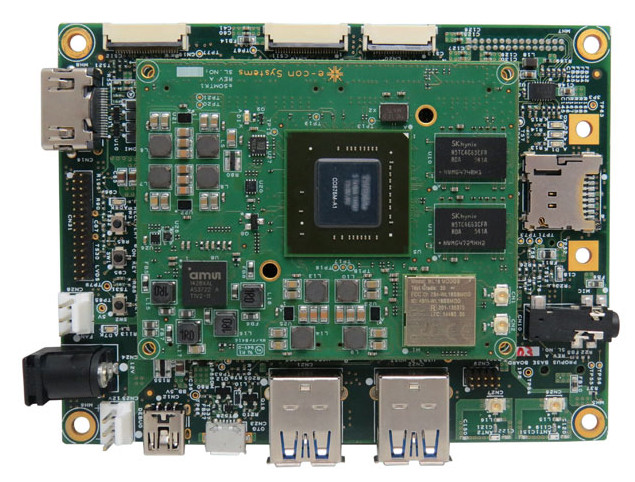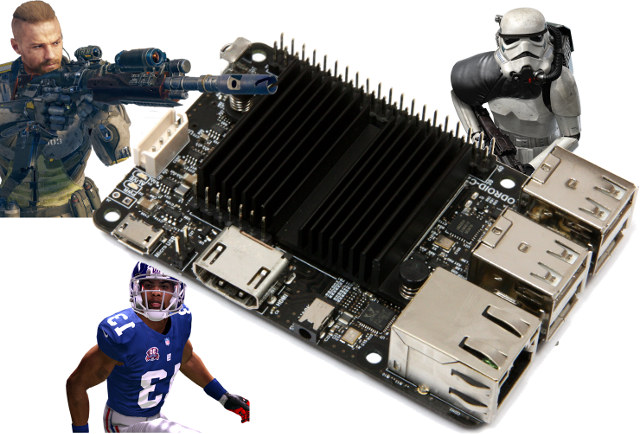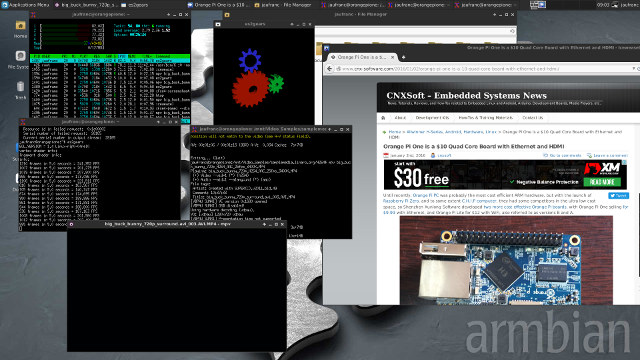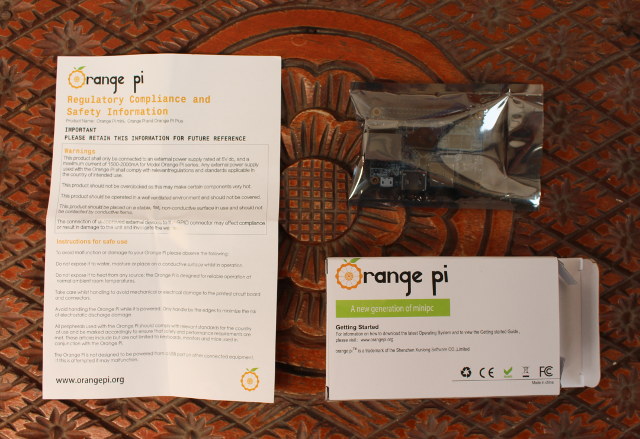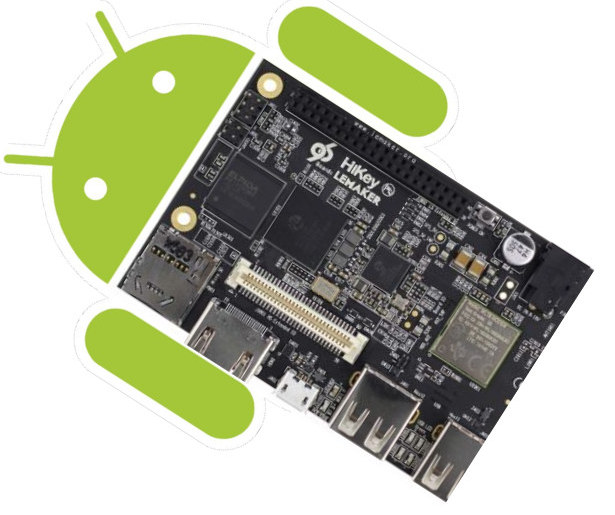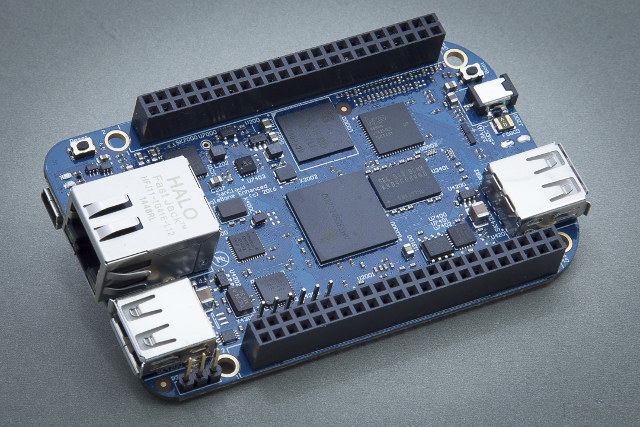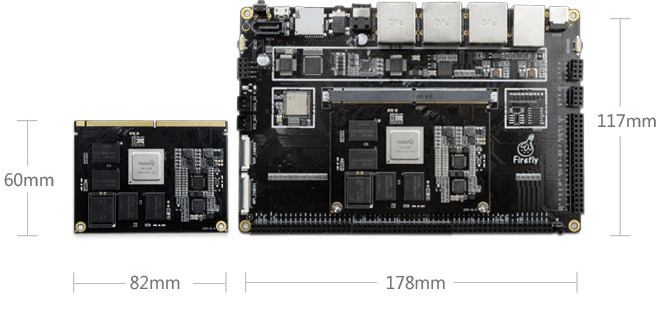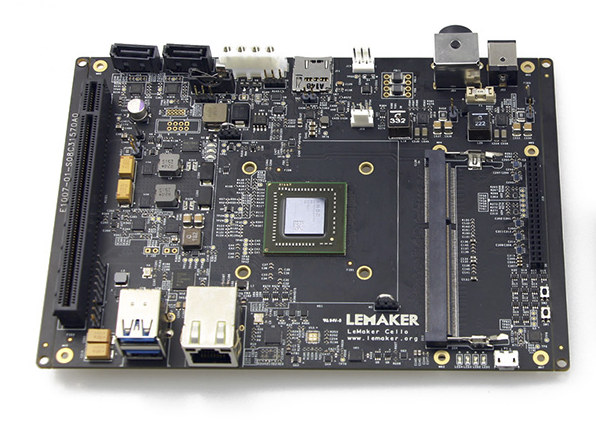I mostly know e-Con Systems because of their camera modules, but the Indian company has also been manufacturing system-on-modules and development kits, and has just launched Propus development board based on their eSOMTK1 computer-on-module powered by Nvidia Tegra K1 quad core Cortex A15 processor, and including three camera interfaces with two 4-lane and one 1-line MIPI-CSI2 connectors. Propus specifications: Computer-on-module – eSOMTK1-F16G-R2G-WB-IM: SoC – Nvidia Tegra K1 4-plus-1 ARM Cortex-A15 processor @ up to 2.3 GHz with 192-core Kepler GPU. System Memory – 2GB 64-bit DDR3L SDRAM Storage – 16GB eMMC flash Connectivity – 802.11 a/b/g/n and Bluetooth 4.1 module with 2 u.Fl antenna connectors Sensors – 3D digital accelerometer and a 3D digital gyroscope (6 axis) Power Management IC (5V and 12V inputs) SoM connectors – 4x 100-pin board to board connectors Storage – SATA connect, micro SD slot Video Output – 1x HDMI 1.4 Audio – Audio Codec […]
Play High-end PC Games on ARM Linux Boards with Moonlight Embedded
Nvidia first showcased PC games streaming to Nvidia Project SHIELD Game Console at CES 2013, and since then Moonlight project has been created to provide an open source implementation compatible with Nvidia Gamestream, and supported on Linux, Mac OS and Windows PC, Android & iOS mobile devices, as well as Samsung VR kits. There’s also an implementation called Moonlight Embedded designed for ARM Linux platforms such as Raspberry Pi,ODROID, Cubox-i boards, and ODROID-C1 and ODROID-C2 boards even got support for H.265 streaming very recently allowing for better quality over H.265 at a given bit rate, and possibly 4K @ 60 Hz gaming on ODROID-C2 board. You’ll need a Windows gaming PC with an Nvidia GTX 600/700/900 series GPU, a wired connecting or a high-end 802.11 router or greater, and Nvidia Geforce Experience (GFE) installed on your PC. H.265 requires an Nvidia 900 series GPU such as Nvidia GTX960. Once this […]
Accelerated 3D Graphics, Hardware Video Decoding, and Network Performance on Orange Pi One Board (Video)
I’ve just written Getting Started Guide for Orange Pi One, a $10 development board based on Allwinner H3 quad core Cortex A7 processor, where I explain how to install and configure Armbian distribution on the board. As promised, I’ve also tested 3D graphics acceleration, and hardware video decoding, and also included some Ethernet benchmarks. Since ARM Mali-400 GPU found in Allwinner H3 is only capable of OpenGL ES, as in most ARM SoCs, you can test 3D graphics acceleration by using es2gears (and not glxgears as I’ve seen some other do in the past):
|
1 2 3 4 5 6 |
es2gears EGL_VERSION = 1.4 Linux-r3p0-04rel0 vertex shader info: fragment shader info: info: 1463 frames in 5.0 seconds = 292.425 FPS |
The log shows the utility is using Linux-r3p0 Mali driver, and the gears are display at a high frame rate close to 300 fps. If I switch to full screen, the frame rate drops to about 43 fps, which should still be acceptable. CedarX is the infamous closed source and GPL violating media library released […]
Orange Pi One Board Quick Start Guide with Armbian Debian based Linux Distribution
Orange Pi One board is the most cost-effective development board available on the market today, so I decided to purchase one sample on Aliexpress to try out the firmware, which has not always been perfect simply because Shenzhen Xunlong focuses on hardware design and manufacturing, and spends little time on software development to keep costs low, so the latter mostly relies on the community. Recently, armbian has become popular operating systems for Linux ARM platform in recent months, so I’ve decided to write a getting started guide for Orange Pi One using a Debian Desktop image released by armbian community. Orange Pi One Unboxing But let’s start by checking out what I received. The Orange Pi One board is kept in an anti-static bag, and comes with a Regulatory Compliance and Safety Information sheet, but no guide, as instead the company simply asks users to visit www.orangepi.org to access information […]
96Boards Hikey Development Board is Now Officially Supported in AOSP
Hikey is a one of the first 96Boards compliant development board manufactured by either LeMaker in China and CircuitCo in the US, and while the hardware requirements of 96Boards specifications are rather easy to meet, the software requirements including “bootloader (open source), accelerated graphics support (binary or open source), a Linux kernel buildable from source code based from mainline, or the latest Google-supported Android kernel version” are much harder to comply with. Linaro had a very good news for Linaro Connect Bangkok as they announced Hikey board was supported in Android Open Source Project (AOSP). So that means Hikey board will run the latest version of Android like Google Nexus devices, with the advantage of also getting more recent devices. If you want to build an Android image from AOSP just retrieve the source code:
|
1 2 |
repo init -u https://android.googlesource.com/platform/manifest repo sync -j8 |
Grab & extract vendors binaries for Hikey from Google.com. and complete the build:
|
1 2 3 |
source build/envsetup.sh lunch hikey-userdebug make -j8 droidcore |
[…]
BeagleBone Enhanced Adds Gigabit Ethernet, More Memory & USB Ports, and Sensors (Crowdfunding)
It’s nice to see BeagleBone Black‘s open source hardware being leveraged by third parties, as we’ve already seen designs such as BeagleBone Green and BeagleBone Black Industrial 4G in the past, and now UK based SanCloud has decided to launch BeagleBone Enhanced on Indiegogo (flexible funding). BeagleBone Enhanced board specifications with bold highlights showing improvements over the BeagleBone Black Rev. C: SoC – Texas Instruments Sitara AM3358 Cortex A8 @ 1 GHz + PowerVR SGX530 GPU System Memory – 1GB DDR3 RAM @ 800 MHz Storage – 4GB eMMC flash + micro SD slot, optional 1MB SPI NOR flash USB – 2x USB 2.0 host port (A type), mini USB OTG port, 2x USB interfaces via expansion header Serial Port – UART0 via 3.3V TTL header Ethernet – Gigabit Ethernet Video Output – micro HDMI with EDID support, up to 1280×1024 resolution. Audio Output – Via HDMI Sensors Optional 6 […]
Firefly-RK3288 Reload Board Features a SoM + Baseboard Design, Supports SATA, Three HDMI Ports, and More
Firefly-RK3288 was one the first boards powered by Rockchip RK3288 quad core Cortex A17 processor, and now Firefly team, part of T-Chip technology, has provided a new version called Firefly-RK3288 Reload with the same processor, but more features, and thanks to design comprised of a carrier board and system-on-module (SoM) – connected via an MXM connector – suitable to people or companies wanting to create their own board without handing the complexity of the processor, memory, and storage part. The table below shows Firefly-RK3288 and Firefly RK3288 Reload specifications side-by side. Parameter Firefly-RK3288 (Plus) Firefly-RK3288 Reload SoC Rockchip RK3288 ARM Cortex-A17 quad core processor up to 1.8GHz with ARM Mali-T760 MP4 GPU RAM 2GB Dual-Channel DDR3 (Plus version is 4GB) 2GB Dual-Channel DDR3 Storage 16GB eMMC (Plus version is 32GB) MicroSD (TF) Card Slot 16GB eMMC MicroSD (TF) Card Slot SATA 2.0 (Suggest 2.5 inch SSD or HDD) PMU ACT8846 […]
LeMaker Cello 96Boards EE Board Powered by AMD Opteron A1120 Processor Targets Server Applications
There are two versions of Linaro’s 96Boards specifications the Consumer Edition (CE) and the Enterprise Edition (EE) with higher hardware requirements, and while several boards mostly compliant with 96Boards CE are available such as DragonBoard 410c and Hikey boards, the only board announced to be compliant with 96Boards EE specifications was AMD Huskyboard based on Opteron A1100 series processor and is yet to be available for sale. LeMaker has now designed a similar EE boards called Cello. LeMaker Cello board specifications: Processor – AMD Opteron A1120 quad core Cortex A57 processor @ 1.7 GHz with 2MB L2 cache, 8MB L3 cache System Memory – 2x DDR3 SO-DIMM sockets Storage – 2x SATA 3.0 ports, micro SD slot Connectivity – 1x Gigabit Ethernet RJ45 port USB – 2x USB 3.0 ports Expansions x16 PCIe G3 slot 40-pin Low Speed (LE) expansion header Debugging – micro USB port for console access, 10-pin […]


